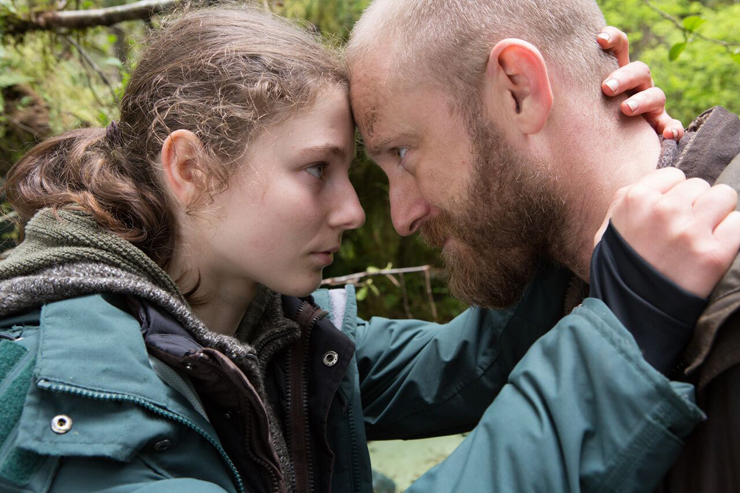
Thomasin McKenzie, Ben Foster.
The trees stand almost as high as the eye can see in the opening scenes of “Leave No Trace.” So does the unshakable bond between a man and his daughter.
This leisurely paced drama, the first fiction feature in nearly a decade from the gifted Debra Granik (“Winter's Bone”), doesn't manufacture the kind of conflict that would estrange a dad from a girl going through the pangs of adolescence. Actually, one of the most striking aspects of the dynamic between Will (Ben Foster), a military vet living with post-traumatic stress disorder, and Tom (newcomer Thomasin McKenzie) is that there's nothing childish about the teen. That, and the fact that they've lived in an Oregon state park for years.
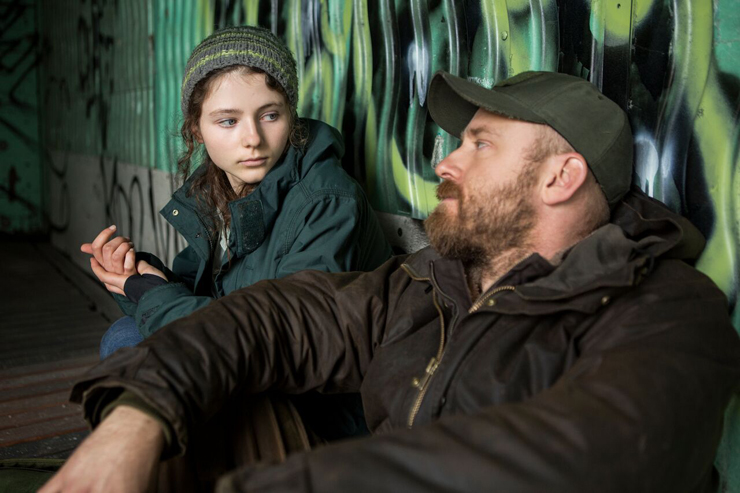
Thomasin McKenzie, Ben Foster.
Granik encourages viewers to slow down and lose themselves in the lush greenery of the woods. The filmmaker gazes at her quiet, stoic characters the way, say, Carroll Ballard looked at a shipwrecked boy and horse in “The Black Stallion.” They become one with nature.
But Granik makes it clear that both father and daughter could be shunned from this garden of Eden if they're ever caught by authorities. So they practice what to do in case that worst case scenario comes to pass, and take all precautions to ensure they're able to elude those who would take them away from the place they call home.
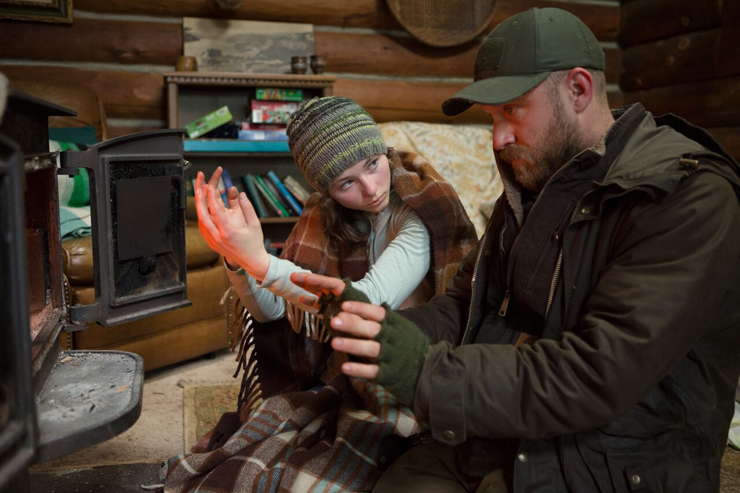
Thomasin McKenzie, Ben Foster.
All it takes for Will and Tom to lose this fragile serenity is for Tom to let down her guard, allowing her to be seen by a visitor. It's something she chooses not to tell her father, but by the time they hear the whirr of a helicopter, it's already too late.
There's no pulse-pounding chase here, no extended sequences that show the longtime trespassers hiding from the law. With no-nonsense economy, Granik shows how Will and Tom are caught and processed through a system that, refreshingly, is portrayed as wanting the best for them.
But while the lack of villains is a shrewd step, the stretch of “Leave No Trace” that takes place away from the park is the film's most conventional and least interesting part. Will undergoes a trying psychological evaluation. Tom has trouble interacting with girls her age at the facility where she's temporarily housed. It all begins to feel like a National Public Radio story writ large, an eating-your-veggies undertaking.
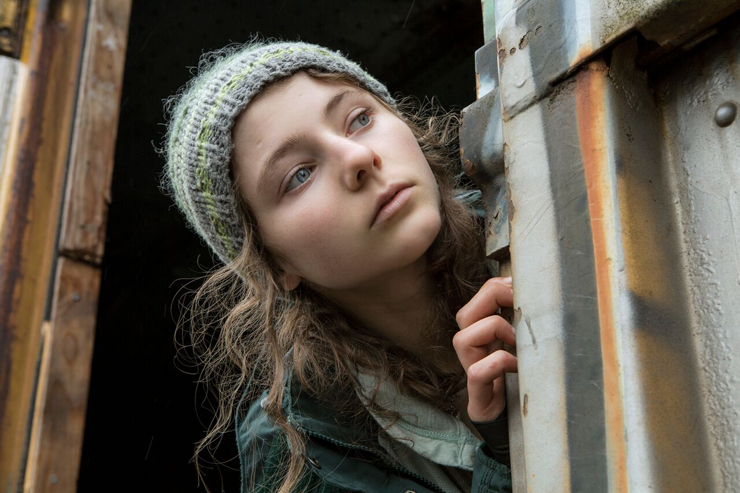
Thomasin McKenzie.
What prevents it from becoming a chore, besides the engulfing, unshowy vistas lensed by cinematographer Michael McDonough (“Sunset Song”), is an unspoken tension between the characters. Will calls out his daughter for not coming to him after she'd been spotted, but in another wise narrative move, lets the matter drop.
However, once they are reunited and given a place to live, a rift occurs in how each of them tries to make a go of it in the “real” world. Civilization does not appear to suit Tom, who reluctantly follows orders at his new job as a farm hand and even takes Tom to church in an effort to fit into this rural community that appears to welcome them. But old habits die hard. For instance, he's so apprehensive about an old tube TV that he hides it in the bedroom closet. Tom, on the other hand, seems to be adapting to the seismic lifestyle change like a trouper.
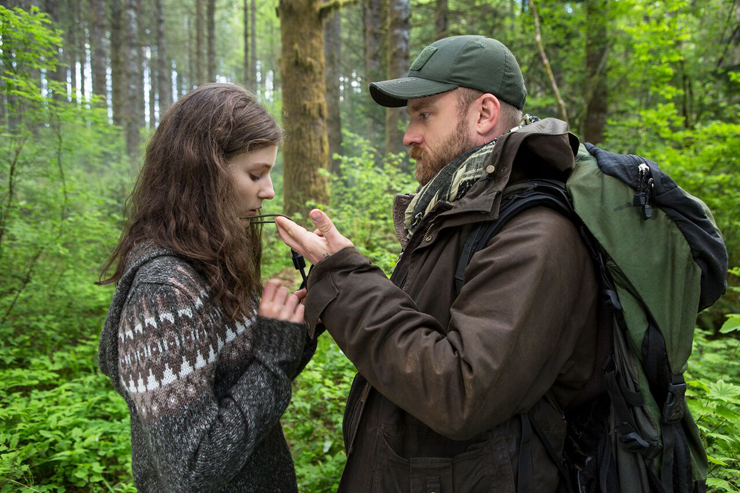
Thomasin McKenzie, Ben Foster.
Granik's eye for ethnographic detail, so instrumental in bringing the hostile Ozarks community depicted in “Winter's Bone” to life, does not fail her here. Urban spaces are seen here as alien landscapes, especially after having acclimated viewers to the sights and sounds of the woods. (Kudos are in order to the film's immersive sound design.) In what initially comes across as a minor scene, Tom attends a rabbit showmanship demonstration. What makes the scene resonate is the way Granik lets it unfold as if she were shooting a documentary, all without ever losing sight of Tom's journey.
That journey takes an abrupt turn as “Leave No Trace” enters its second hour. Tom, ever the dutiful daughter, follows his restless nomadic dad back into the wild, only this time they find themselves at the mercy of the elements in increasingly dangerous situations. It is a testament to Granik's storytelling prowess that she sees no need to ratchet up the tension when the going gets tough for Will and Tom, and the film is stronger because of it.
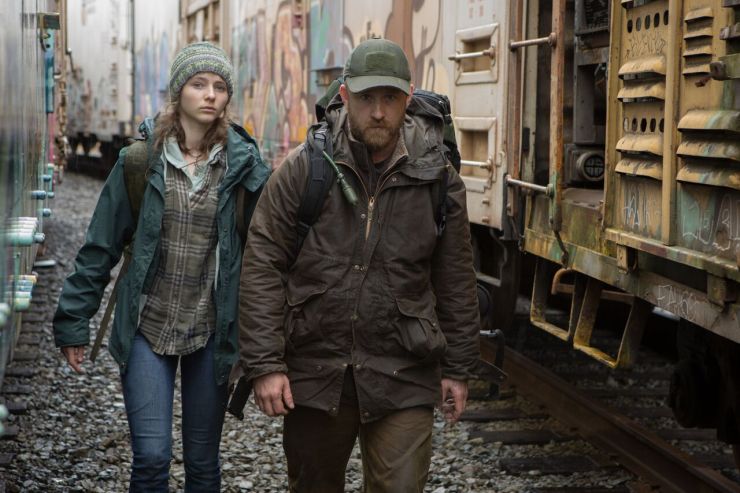
The director and longtime screenwriting collaborator Anne Rossellini have adapted Peter Rock's novel “My Abandonment” for the screen, which itself was inspired by a real father and daughter who were discovered to have been living for four years in the nature preserve bordering Portland. They were never heard from again after they mysteriously went off the grid once more, so the author, naturally, has filled in the blanks as to what he thinks happened to them.
Granik and Rossellini have taken these fact-inspired elements and turned them into a gritty yet tender tale of trust tested and replenished, of seemingly insurmountable demons that threaten to tear a family asunder. They resist the temptation of providing a backstory for the characters. There are no war flashbacks anywhere in sight, no explanation for the absence of Tom's mother. What remains on the screen is a bittersweet coming-of-age tale that's a little granola but also rendered with conviction, and anchored by two deeply affecting central performances. It never hits a false note.
“Leave No Trace” is now showing in theaters across South Florida, including Regal Cinemas South Beach, AMC Aventura 24, the Classic Gateway Theatre in Fort Lauderdale and Living Room Theatres FAU in Boca Raton.
 MAIN MENU
MAIN MENU

